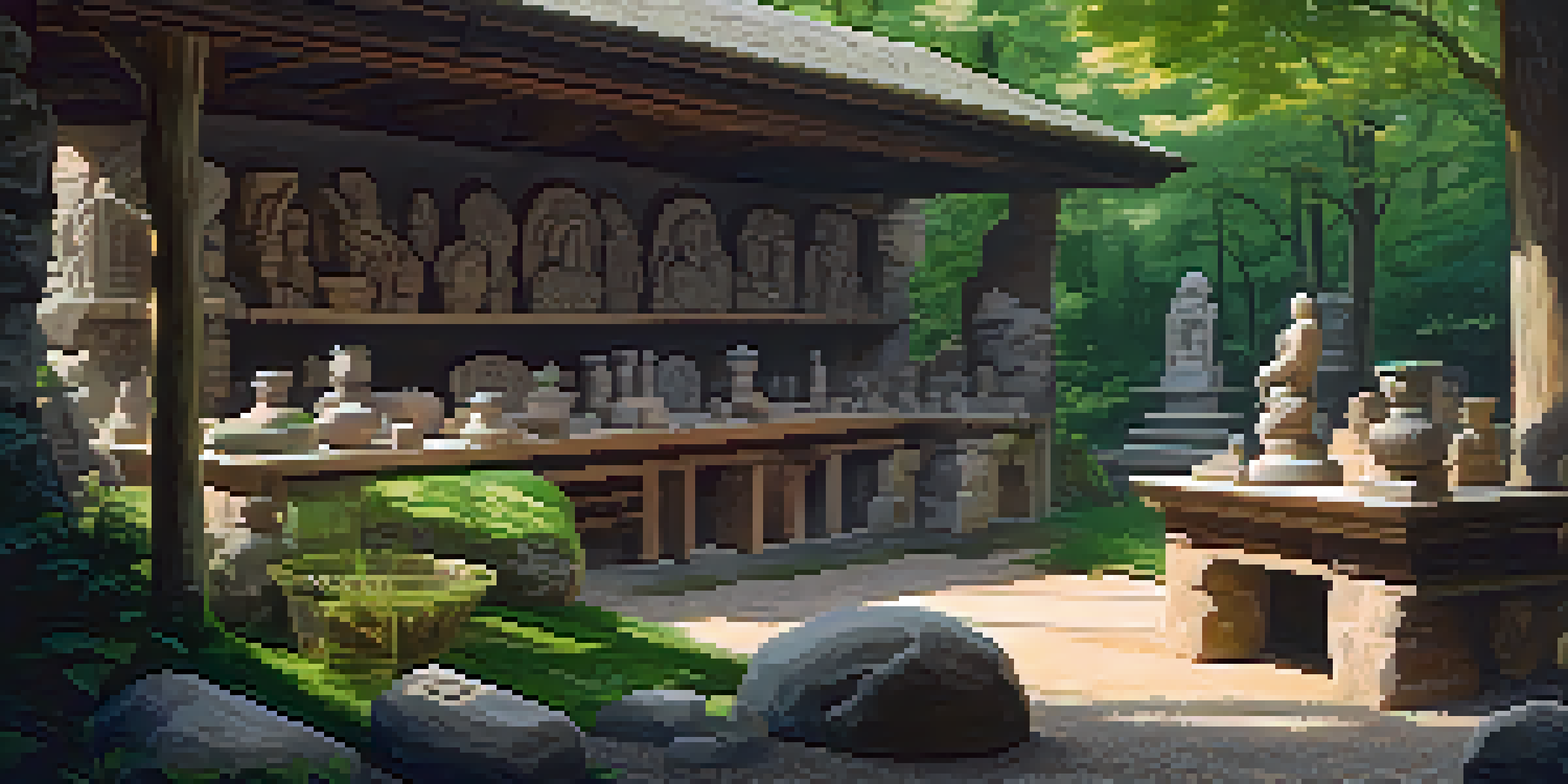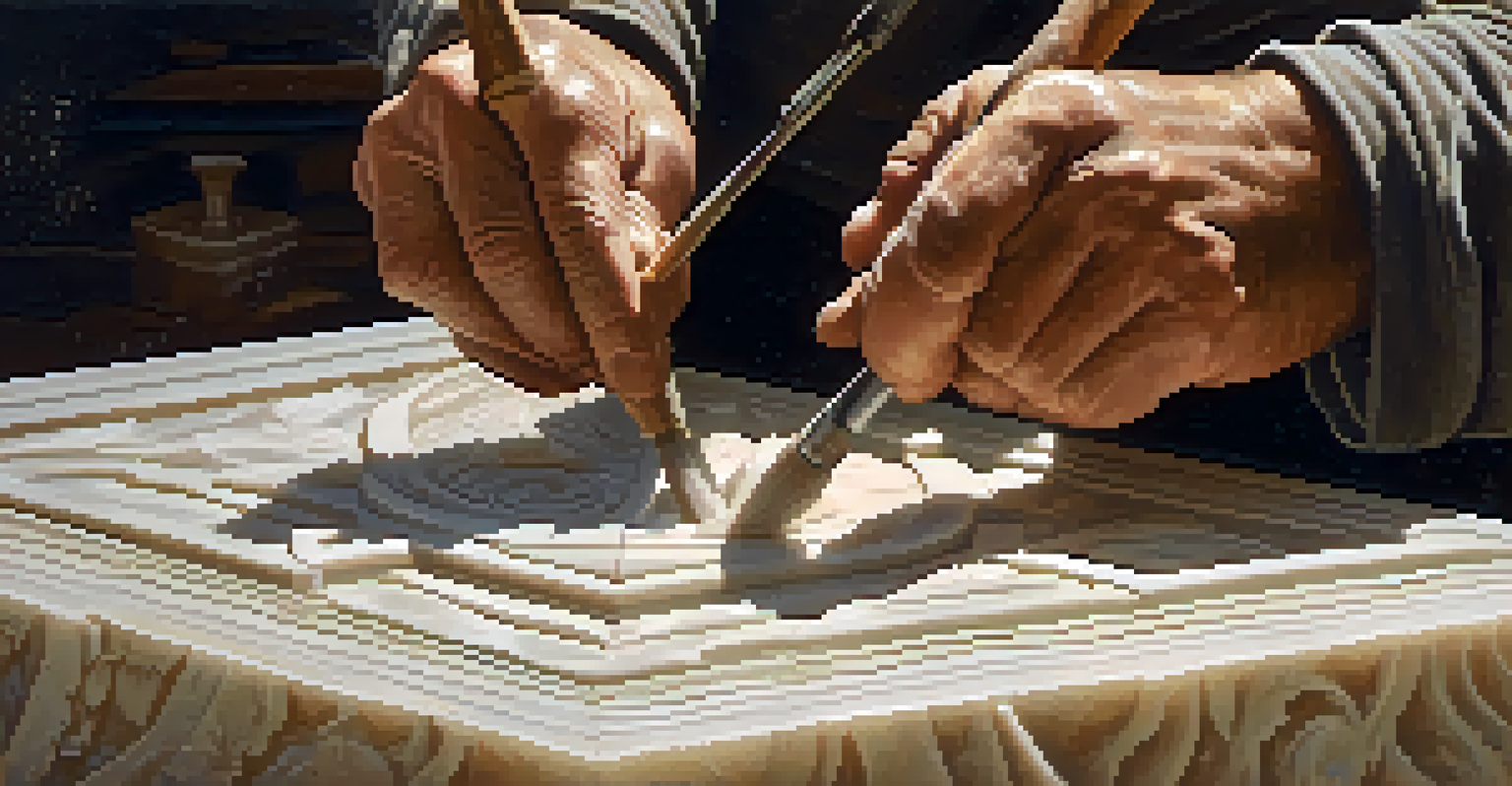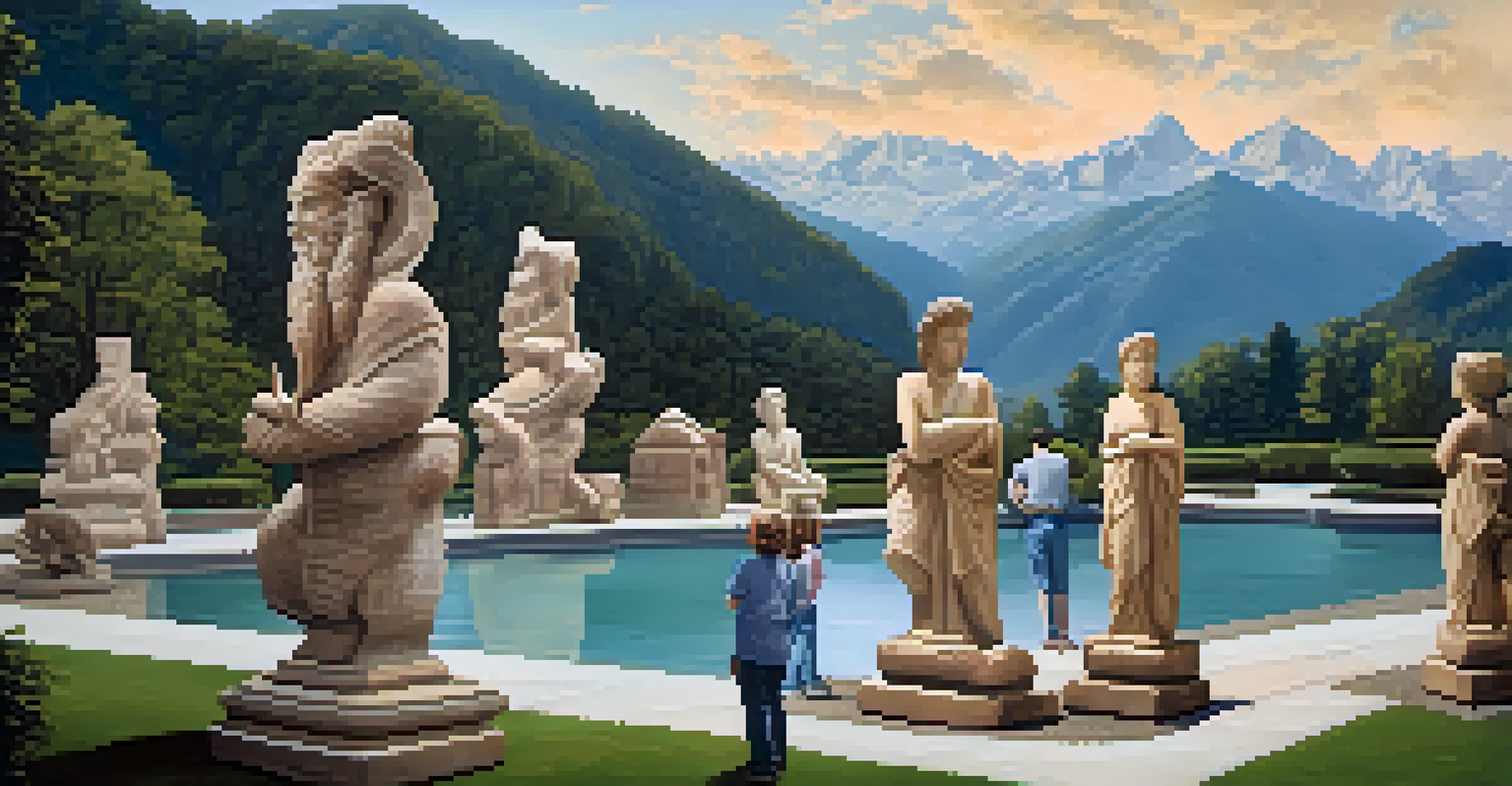The Influence of Nature on Stone Carving Techniques and Styles

The Role of Natural Materials in Stone Carving
Stone carving is deeply influenced by the types of materials available in nature. From granite to marble, each stone type carries its own unique characteristics, which artisans must understand to create their masterpieces. For instance, softer stones like soapstone are easier to carve but may not hold fine details as well as harder stones like granite.
Every artist dips his brush in his own soul, and paints his own nature into his pictures.
The choice of stone not only affects the technical aspects of carving but also the aesthetic appeal of the finished piece. Artists often select stones that resonate with their artistic vision, leading to a diverse array of styles and techniques. This intimate relationship between material and method is what makes stone carving a truly unique art form.
Furthermore, the availability of different stones varies by region, which means that local geology can significantly influence the traditional styles of stone carving. For example, the striking red sandstone in the American Southwest has shaped a distinct style of carving that is different from the classic Italian marble sculptures.
Weathering and Erosion: Nature's Sculpting Hand
Nature's forces, such as weathering and erosion, play a crucial role in shaping both the stone itself and the techniques used by carvers. Over time, natural elements can wear down stone surfaces, creating textures that artists may choose to replicate or enhance in their work. This interplay between nature and artistry can lead to innovative techniques that are both functional and visually captivating.

For example, the natural patterns found in weathered stone can inspire artists to mimic these organic designs in their carvings. By observing how nature shapes materials, carvers can develop a deeper understanding of texture and form, allowing them to create pieces that feel more alive and connected to their surroundings.
Nature Shapes Stone Carving Styles
The types of natural materials available significantly influence the techniques and artistic expressions of stone carvers.
Additionally, some artists intentionally incorporate these natural elements into their work, using techniques that highlight the stone's inherent qualities. This not only showcases the beauty of the material but also pays homage to the natural processes that shaped it.
Cultural Influences of Local Landscapes
The geographical environment of a stone carver significantly influences their style and technique. For instance, cultures that thrive near mountains often reflect the grandeur of their surroundings in their stonework, showcasing tall, imposing figures that echo the peaks around them. This connection to the landscape creates a sense of place and identity within the art.
Nature is not a place to visit. It is home.
Conversely, coastal regions may inspire more fluid shapes and designs that mimic the waves and movement of the sea. Carvers from these areas might use techniques that emphasize smooth, flowing lines, capturing the essence of their natural surroundings. This relationship between landscape and artistry is a testament to how deeply nature can influence creative expression.
Moreover, the cultural significance of specific landscapes can lead to the development of unique carving techniques rooted in tradition. As carvers pass down knowledge through generations, these regional styles evolve, further enriching the tapestry of stone carving as an art form.
The Spiritual Connection Between Nature and Art
Many stone carvers feel a deep spiritual connection to nature, often viewing their craft as a dialogue with the earth. This connection can enhance the emotional depth of their work, as they channel the energy of their surroundings into each piece. Carvers often find inspiration in the tranquility of natural settings, allowing them to create art that resonates on a profound level.
For some, the act of carving stone becomes a meditative practice, where the rhythm of chisel against stone mirrors the natural rhythms of the world around them. This spiritual engagement not only influences the artist's technique but also imbues the finished work with an essence that speaks to viewers on a deeper level.
Seasons Affect Carving Techniques
Seasonal changes impact stone carving practices, prompting artists to adapt their methods and materials accordingly.
Additionally, many cultures incorporate spiritual beliefs into their stone carving practices, viewing the materials as sacred. This reverence for nature can lead to the creation of pieces that honor the environment, serving as both art and tribute to the earth.
Seasonal Changes and Their Impact on Techniques
The changing seasons can have a significant impact on stone carving techniques and practices. For example, in colder climates, carvers might adapt their methods during winter months when outdoor work becomes challenging. This could lead to the development of new techniques or adaptations that align with the constraints of the season.
During spring and summer, when weather conditions are more favorable, carvers often take advantage of the natural light and warmth to work outdoors. This not only enhances their productivity but also allows them to draw inspiration from the vibrant colors and energy of nature during these months.
Moreover, different seasons can influence the choice of materials as well. Some stones may be more accessible during certain times of the year, leading artists to experiment with various types and styles based on seasonal availability.
Nature as a Source of Inspiration for Artistic Expression
Nature serves as a boundless source of inspiration for stone carvers, influencing both their techniques and artistic expressions. The intricate patterns found in natural stone formations, such as cracks, veins, and fossils, can spark creative ideas that translate into unique carvings. This ability to draw from the environment allows artists to create pieces that reflect the beauty of the world around them.
Many carvers often venture into natural settings to observe and sketch the shapes, colors, and textures that inspire their work. This practice of engaging with the environment not only informs their techniques but also fosters a deeper appreciation for the materials they use. The result is a body of work that celebrates the interplay between nature and art.
Spiritual Connection to Nature
Many stone carvers view their craft as a spiritual dialogue with nature, enhancing the emotional depth of their work.
Additionally, some artists use their work to raise awareness about environmental issues, crafting pieces that speak to the beauty and fragility of nature. This commitment to environmental themes reinforces the idea that stone carving is not only an art form but also a means of conveying important messages about our relationship with the natural world.
The Future of Stone Carving: Nature and Innovation
As technology advances, the future of stone carving is evolving while still being deeply rooted in nature. Modern tools and techniques allow carvers to experiment with new styles that blend traditional craftsmanship with innovative approaches. This fusion of old and new can lead to exciting developments in the art form, pushing the boundaries of what is possible in stone carving.
However, this technological advancement does not diminish the importance of nature's influence. Many contemporary artists continue to emphasize the significance of natural materials and environmental themes in their work. By honoring the traditions of the past while embracing modern techniques, these artists create a rich dialogue between nature, art, and innovation.

Looking ahead, the challenge will be to maintain this connection to nature while exploring new creative avenues. As artists continue to draw inspiration from their surroundings, the world of stone carving will undoubtedly evolve, reflecting both the beauty of nature and the ingenuity of the human spirit.